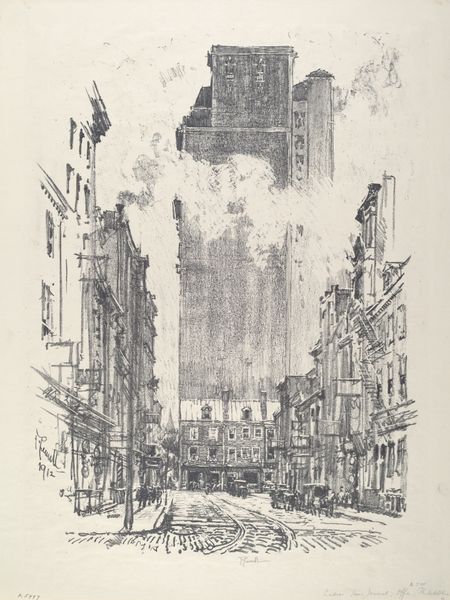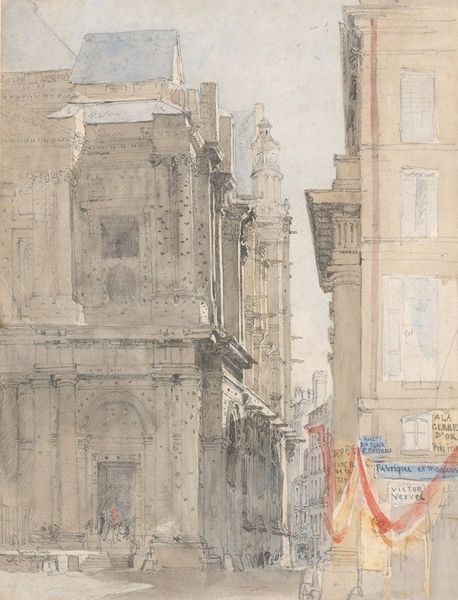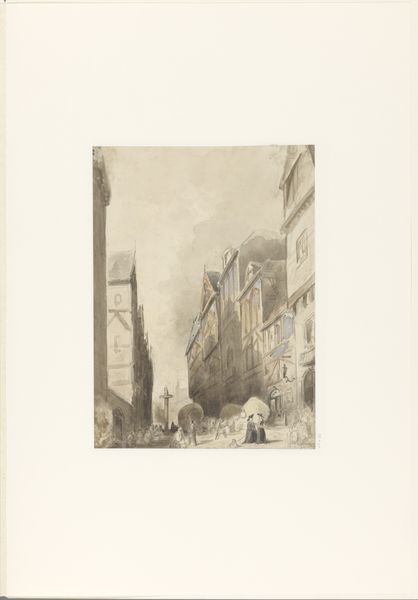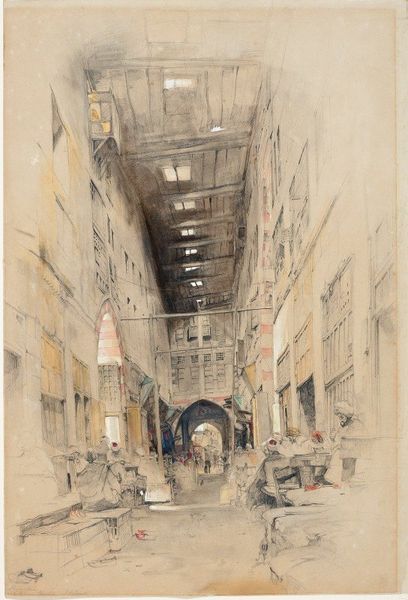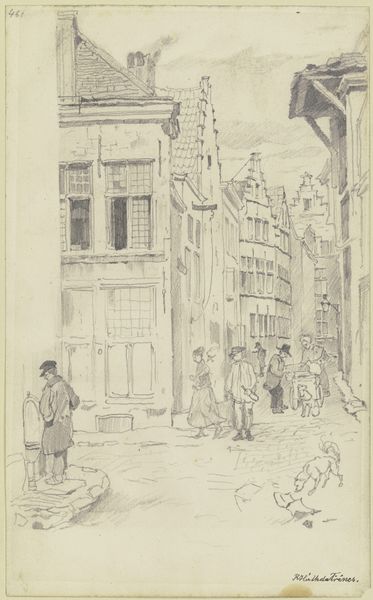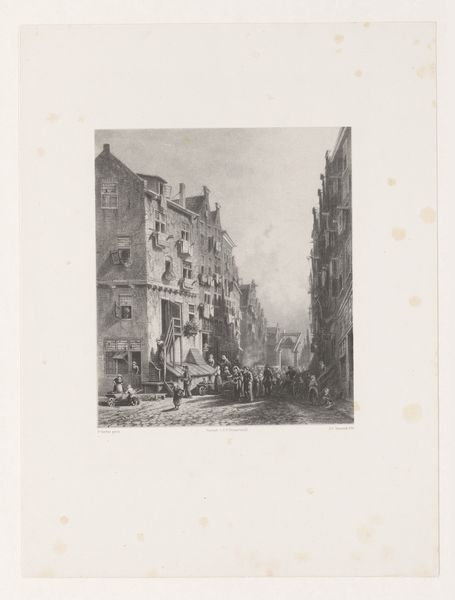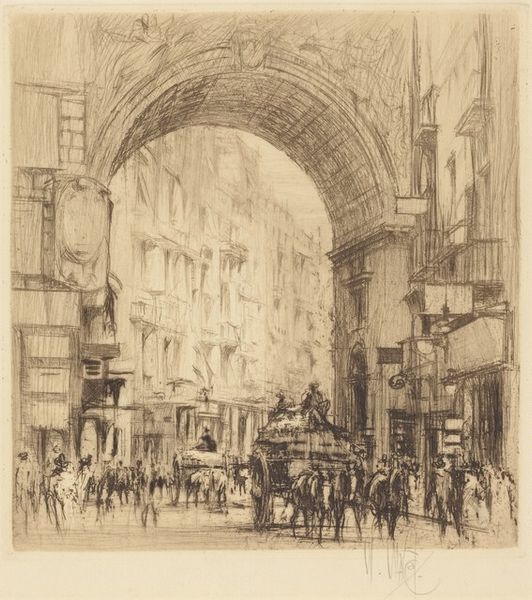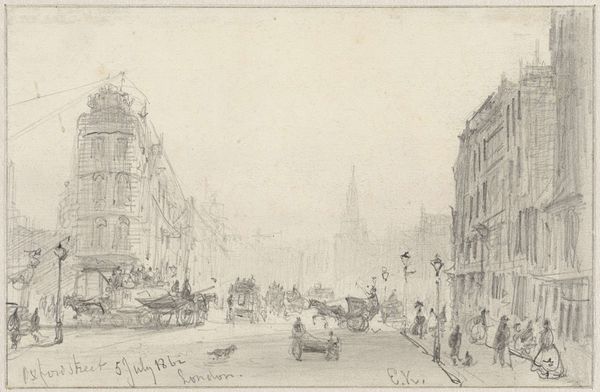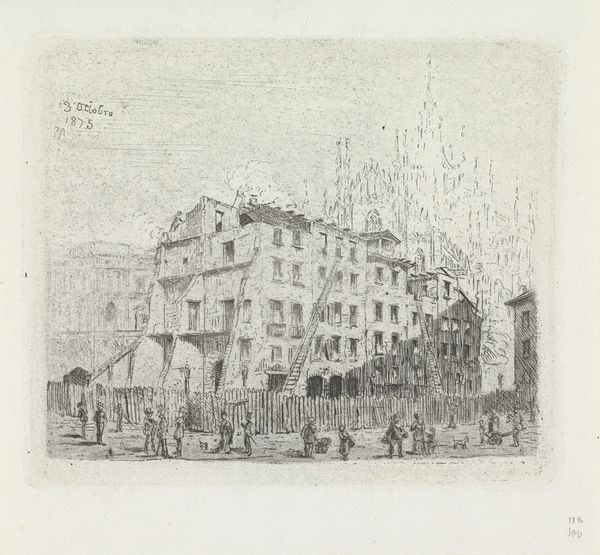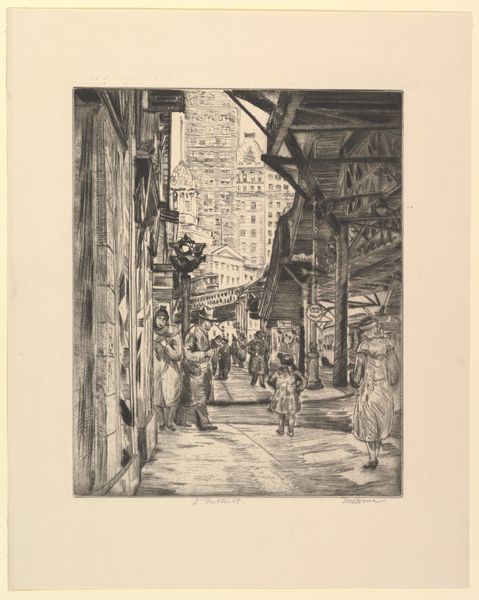
drawing, coloured-pencil, lithograph, print, paper, watercolor
#
drawing
#
coloured-pencil
#
lithograph
# print
#
landscape
#
paper
#
watercolor
#
coloured pencil
#
romanticism
#
cityscape
#
watercolor
Dimensions: 370 × 267 mm
Copyright: Public Domain
Editor: Here we have Thomas Shotter Boys’ “Rue Notre Dame, Paris,” a colored pencil and watercolor lithograph from 1839. I find the detail incredible – capturing everyday street life with Notre Dame looming in the background. What strikes you most about this work? Curator: Considering it's a print, let's think about production. Lithography allowed for wider distribution and, therefore, a broader consumption of images of Paris. Boys meticulously colored each print. Think about the labor involved—replicating this view of Paris multiple times. The market was clearly there, feeding a fascination with the city. Editor: That’s interesting; I hadn't considered the economic aspect so directly. What does the specific material – the choice of lithography – tell us? Curator: Lithography was becoming a commercially viable medium, less exclusive than, say, an original painting. It speaks to a shift in who could own and consume art, documenting urban life for a burgeoning middle class, hungry for views of Paris. The hand-coloring then elevates the print above purely mechanical reproduction; what is machine-made and what is artisan made is deliberately blurred. Editor: So the value isn't just in the artistic skill, but also the accessibility that the printing process provided. Curator: Exactly. We often divorce ‘fine art’ from the mechanics of its creation and dissemination. Here, the printmaking itself is deeply enmeshed in the artwork’s meaning and purpose. Consider who the audience was, where the work was made, and the systems by which this view was circulated, how does this compare to similar prints that catered to bourgeois consumers? Editor: That definitely provides a richer understanding beyond just seeing it as a pretty picture of Paris! I’ll certainly think more about the material production process when I look at prints moving forward. Curator: Indeed, every choice of material, and production method contributes significantly to an artworks’ narrative.
Comments
No comments
Be the first to comment and join the conversation on the ultimate creative platform.
